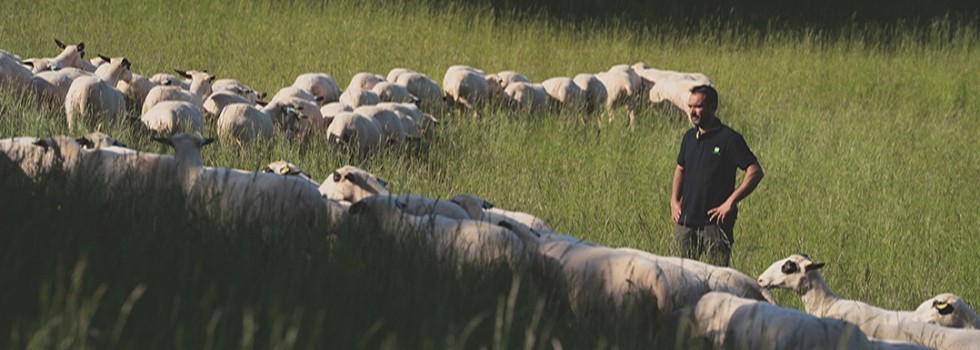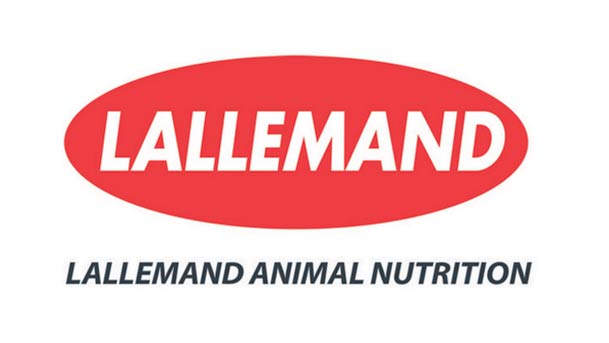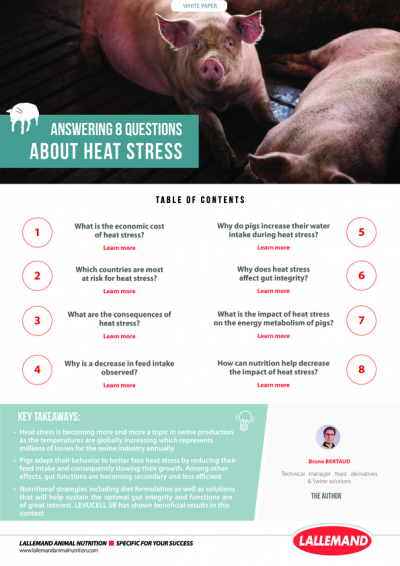Promotional Features
A dedicated focus on small ruminant nutrition
Like all farm animals, sheep and goats require high quality rations and balanced diets to be healthy and perform well.
The production of milk and meat from small ruminants is relatively smaller compared to the volumes produced by dairy and beef cattle operations. Yet, the small ruminant sector serves as an important food security, economic and social asset in – mainly – rural areas. Also, the global demand for goat and sheep dairy and meat is steadily rising, due to a combination of increasing dairy consumption in general (+1.5% per year over the next decade), per capita incomes and changing taste preferences.1
Sheep milk for example has a unique compositional and nutritional profile that makes it a preferred choice for some people over bovine milk. Also, sheep meat is on the rise. According to the OECD-FAO Agricultural Outlook 2023-2032, sheep meat consumption is projected to grow and 15% respectively by 2032.1
Lallemand Animal Nutrition’s (LAN) dedicated approach and portfolio for small ruminants helps to fill the gaps around nutrition and management of this growing and important sector.
Intensive and extensive systems
With the increased interest in animal protein from small ruminant farms, the incentive to further improve current management and nutritional practices is also there,especially given that the level of technical knowledge, the management practices applied, and the feed given can be very diverse around the world.
“When we look at dairy cow operations, we see very intensive systems that are highly controlled around feeding, breeding and milking. Some dairy sheep and goat farms are comparable to this level of intensity and expertise,” says Emilie Arcier, Technical Support Manager at Lallemand Animal Nutrition.
“In France for example, we have a lot of dairy ewes to produce high quality and speciality cheeses like Roquefort. We see that these farms are very controlled and are very much focused on nutrition, technology and are milking twice a day for high efficiency. Also in the Netherlands, intensive goat farms can be found,” adds Arcier.
When we look at European sheep breeding operations on the other hand, they often have very extensive grazing periods, having year-round models and only bring the ewes back in for lambing. Arcier explains: “For these systems, meeting the nutritional needs is harder to control. Ewes and goats require more energy during the late pregnancy-early lactation phase, for example.
“During this period, the animals require more energy than they can consume through their diet. If this is not managed well, it can lead to a negative energy balance and high mobilisation of body fat reserves, hence spurring the onset of ketosis and acidosis.
"For these robust outdoor systems and associated lambing practices, it is also important to have colostrum quality, silage quality and environmental hygiene during lambing in order. This is key to keep mortality rates as low as possible and boost the immunity of the lambs before they are sent back into the paddock.”
At the same time, we also see more intensive systems popping up. Key countries, such as South Africa, Iran and China, are turning to fattening sheep as their main source of meat. This is reflected in more organized, large operations (feedlots systems) in these countries, representing thousands of animals per farm.
Changing mindset for antibiotic use
While some farms have already made huge professionalisation leaps over the years regarding management and nutrition, there is always potential to further optimise. And this is needed across the sector to be better equipped to handle more complex diseases and production and sustainability challenges.
“The challenges that sheep and goat farmers face today are comparable to what we see happening in dairy and beef cows. This includes elevated risks for heat stress and mycotoxins due to climate change, the need to further reduce antibiotics, meeting consumer demands regarding welfare and longevity of animals, the need to reduce and report methane emissions, and more. Some of these challenges were not on the radar ten years ago for sheep and goat farmers,” says Arcier.
One hot topic is antibiotic reduction in Europe. Already banned since 2006 for growth promotion, the focus has now turned to more responsible use of antibiotics when applied for therapeutic reasons. This is mainly an issue in fattening sheep.
“In France for example, there are big sheep fattening units that purchase lambs from different locations. This comes with biosecurity risks as farmers used to apply curative antibiotics through the feed to reduce the risk of disease spreading,” adds Arcier.
"As this is no longer possible we notice that farmers are looking for alternative ways to prevent diseases. For example, by applying nutritional measures that increase the immunity, antioxidant status and resilience of both adult sheep and lambs. However, this requires a change in mindset with our customers, as antibiotics were always seen as an effective and quick fix.
“Building up immunity and resilience takes a bit longer, but it is a more sustainable approach and in line with our mission to reduce antibiotics and antimicrobial resistance. In addition, we see great performance results when doing so. For example, when we increase the antioxidant status in gestating ewes, we see improvements in their offspring.”
Improved performance shown in trials
Small ruminants is an important sector for LAN. Already strong in microbial solutions for dairy and beef animals, the company is also applying these solutions for small ruminants in a successful and proven way.
“Although much of the science can be translated from the dairy and beef sector, small ruminants do need a specific approach. For starters, this has to do with their size. Being smaller, also means having a smaller rumen, which makes them less efficient than dairy cows when it comes to detoxifying mycotoxins for example,” explains Laurent Dussert, Category Manager Ruminant Feed Additives at LAN.
“This can cause serious problems for pregnant ewes and goats. Being smaller also means having a smaller mouth and being able to sort more in the forage. This is why mixing the feed is important to make sure that the animal gets all the nutrients with every bite. Also, silage quality is a hot topic in small ruminants. Badly fermented silage can lead to the disease listeriosis, which can induce a blood infection and abortion in sheep and goats.”
LAN has an integrated portfolio of yeast-based solutions for small ruminants that target immunity and antioxidant status of animals, rumen efficiency, colostrum quality, silage quality, mycotoxins, environmental hygiene (bedding quality), among others.
Dussert explains: “Studies, in cooperation with National Research Institute for Agriculture (INRAE) France, showed that the application of our rumen specific live yeast in the diet of gestating ewes stabilized the microbial populations along the gastrointestinal tract, leading to better nutrient utilization and better energy partitioning.2 It also increased the level of oligosaccharides, lactoferrin and IgG levels in the colostrum, which led to more resilient and heavier lambs (+270 grams compared to control group).
Complete farm microbial ecosystem approach
In the dynamic world of small ruminant farming, every detail counts towards achieving excellence in milk and meat production. Lallemand Animal Nutrition is at the forefront of this industry, with a mission centered on the innovative use of microorganisms to boost animal performance and health. Its specific solutions, such as LEVUCELL SC, are designed to help optimize rumen function and feed efficiency, while products like ALKOSEL and MELOFEED supports antioxidant defenses, ensuring peak performance and welfare for sheep and goats. Beyond nutrition, Lallemand's offerings extend to improving silage, bedding and manure quality, as well as feed processing techniques. This integrated approach not only elevates animal productivity but also supports sustainable farming practices. Find out more about Lallemand's world of animal nutrition solutions.
References
1. OECD. OECD-FAO Agricultural Outlook 2023-2032.
2. Dunière, L,; Renaud, JB.; Steele, MA.; et al. (2022). A live yeast supplementation to gestating ewes improves bioactive molecule composition in colostrum with no impact on its bacterial composition and beneficially affects immune status of the offspring. J Nutr Sci. 11:e5.







